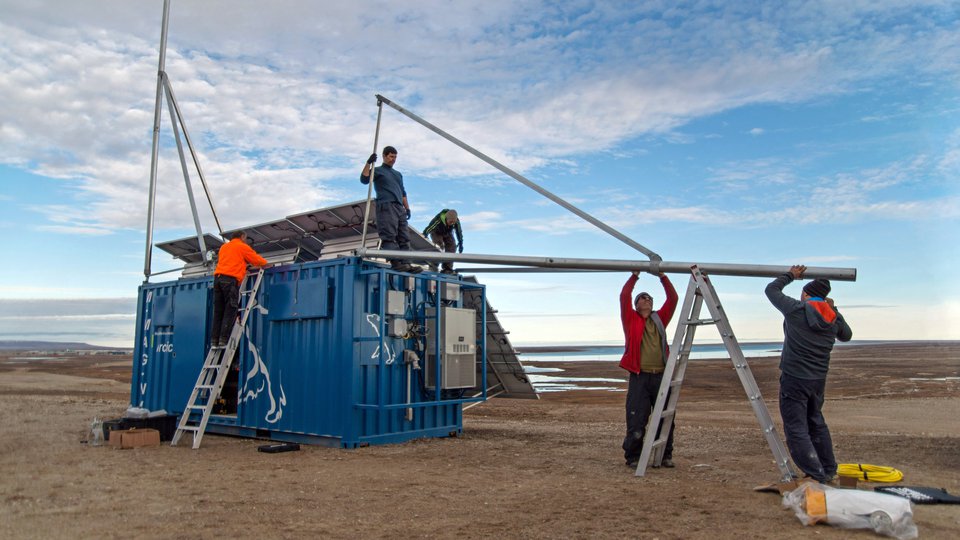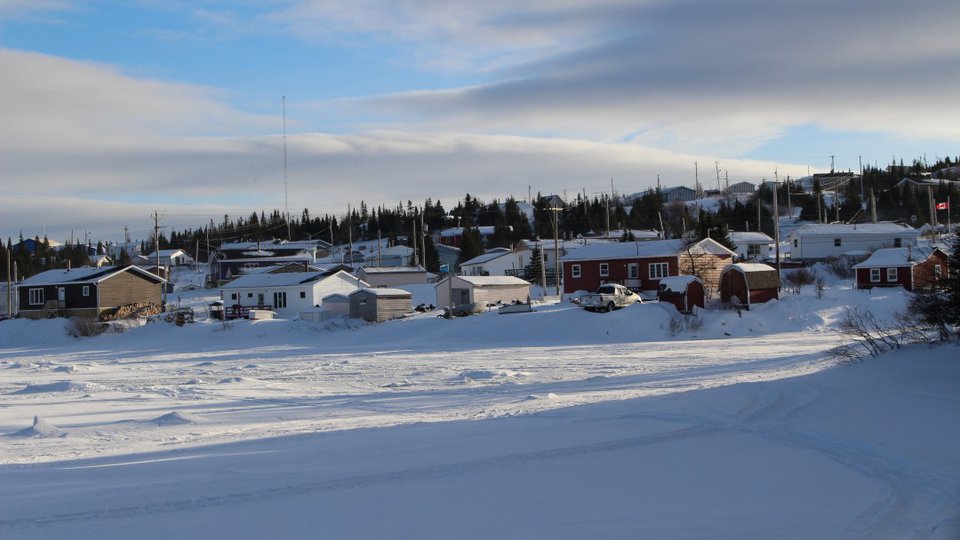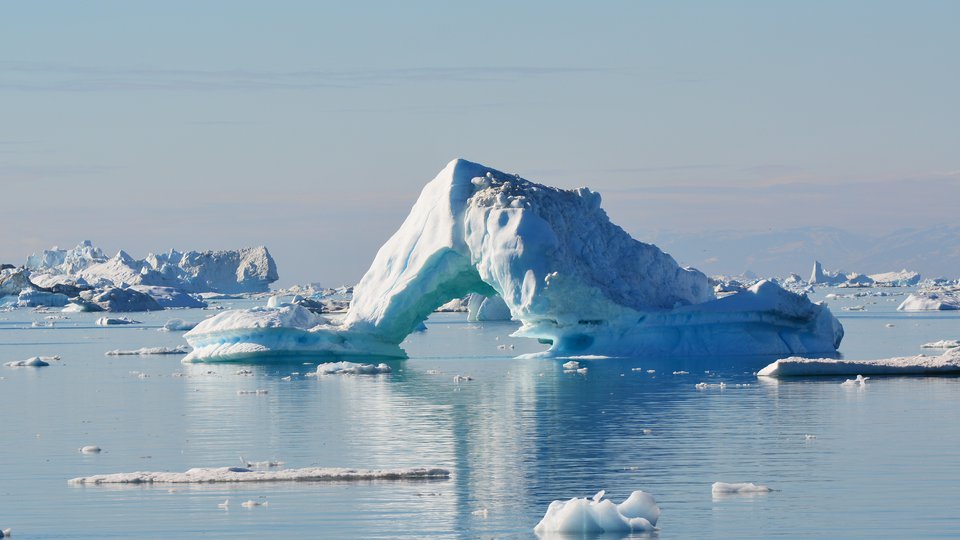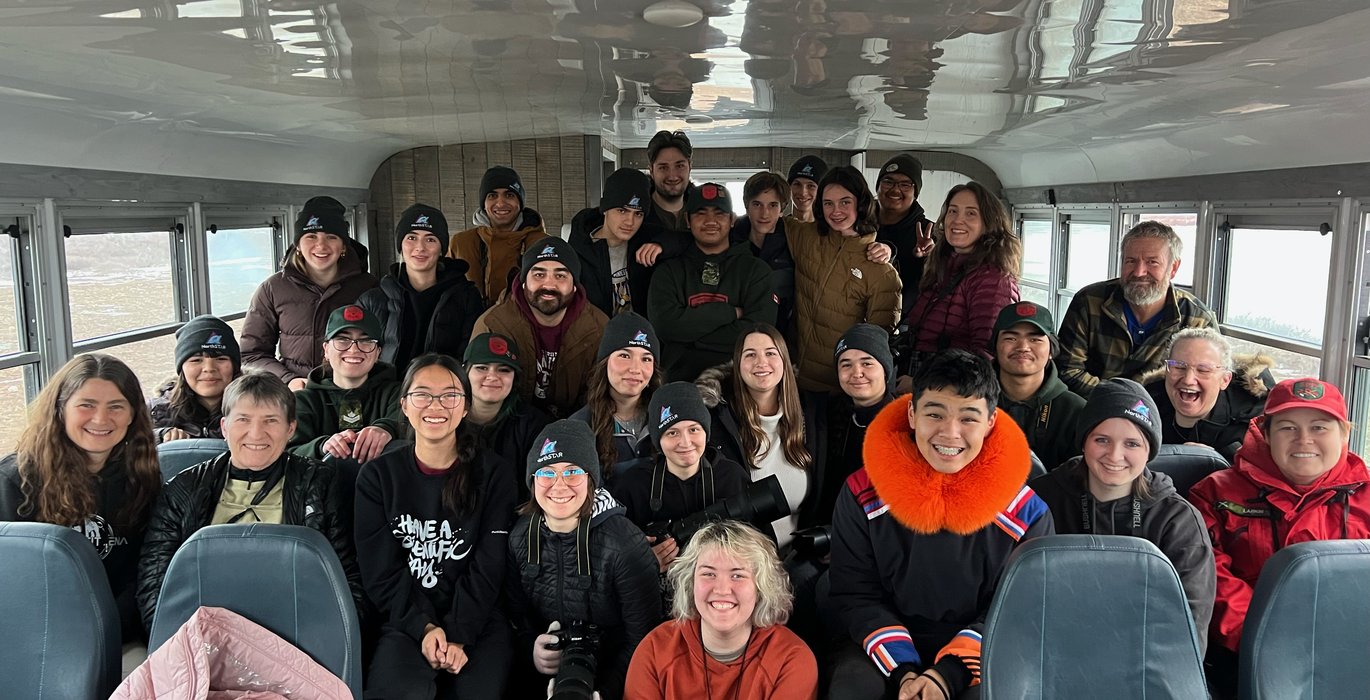
After more than eight hours on a bus and a gruelling 17-hour train ride, Micah Witt Oguzoglu finally arrived in Churchill, Manitoba—cold, exhausted, but eager for the adventure ahead. The grade 11 student was part of a dedicated team of high school and university students documenting the impacts of climate change on the region’s declining polar bear population.
“In the fall of 2024, I was given an incredible opportunity to travel to Churchill, Manitoba, to conduct research on polar bears. The long journey tested my patience, but the anticipation of seeing polar bears and Arctic wildlife kept me alive for the night!”
Every fall, students, teachers, youth leaders, and researchers who make up the diverse Northern Student-led Arctic Research (NorthSTAR) Program converge in Churchill to collect standardized photos of bears that can be used to address important research questions about the health of this population.
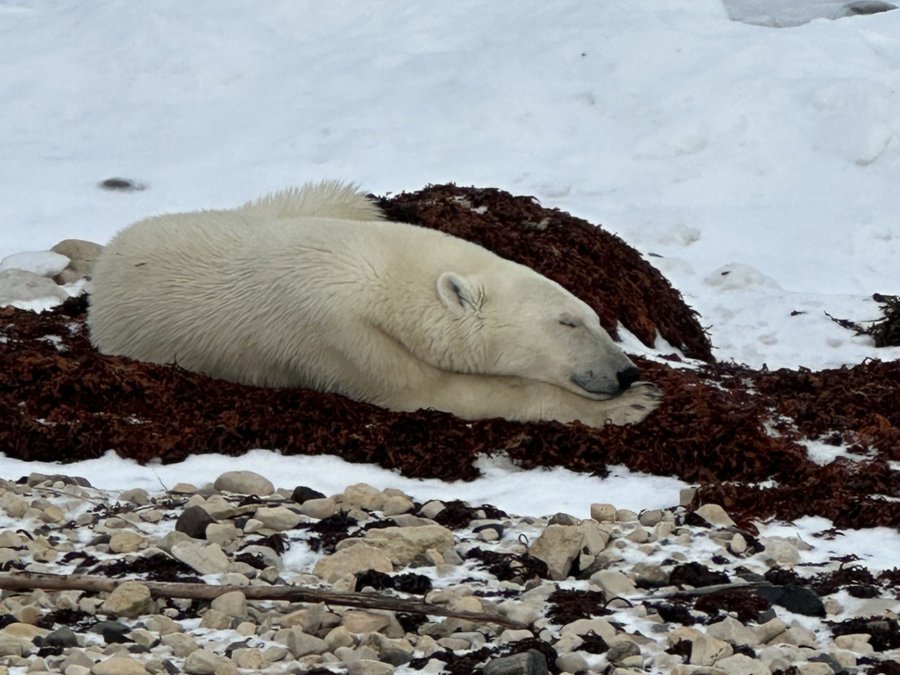
(PHOTO: NORTHSTAR PROGRAM)
Founded by Jane Waterman of the University of Manitoba and École Kelvin High School teacher Donna Labun, the NorthSTAR team also includes Churchill Junior Canadian Rangers, students from Nelson McIntyre Collegiate in Winnipeg, and undergraduates from the University of Manitoba Wawatay and Access Programs. It trains students in data collection, analysis of bears’ unique whisker prints and individual body condition, and in communicating their results at local and national scientific conferences.
“This program wasn’t just the journey itself. Before heading north, we had to put in some hours to learn about what we were about to do,” said Witt Oguzoglu.
According to Witt Oguzoglu, the preparation process spanned two days. The first day was spent in the classroom, where university students and professors shared insights from their own research in the Churchill area.
“One lecture that stood out to me was by Professor James Roth, who spoke about Arctic foxes and their impact on Churchill’s tundra ecosystem. It was an amazing experience to learn how changes in their population could have such devastating effects on the food web. During this day, I also learned one of the key field skills for our research: how to take a good body condition index photo of a polar bear. ”
"This training was incredibly important in refining our skills in observation and documentation, as well as learning how to take appropriate whisker-print photos for identifying individual bears."
While the first day focused on theory, the second day of training was all about hands-on experience at the Assiniboine Park Zoo.
“We practiced wildlife photography, using high-quality digital SLR cameras to capture images of the zoo’s polar bears and other animals. This training was incredibly important in refining our skills in observation and documentation, as well as learning how to take appropriate whisker-print photos for identifying individual bears.”
Witt Oguzoglu is currently in the International Baccalaureate program at École Kelvin High School in Winnipeg, Manitoba. After high school, he intends to study climate change and solutions as an environmental engineer.
Veronika Madinova has been a part of the NorthSTAR program for two consecutive years. She is a student at Nelson McIntyre Collegiate in Winnipeg, MB. She moved from Ukraine to Canada in 2022 and is fascinated with science and how climate change affects polar bears.
“Bone-freezing cold, relentless winds, crammed accommodations - my expectations of Churchill had been shaped by stories, not experience.”
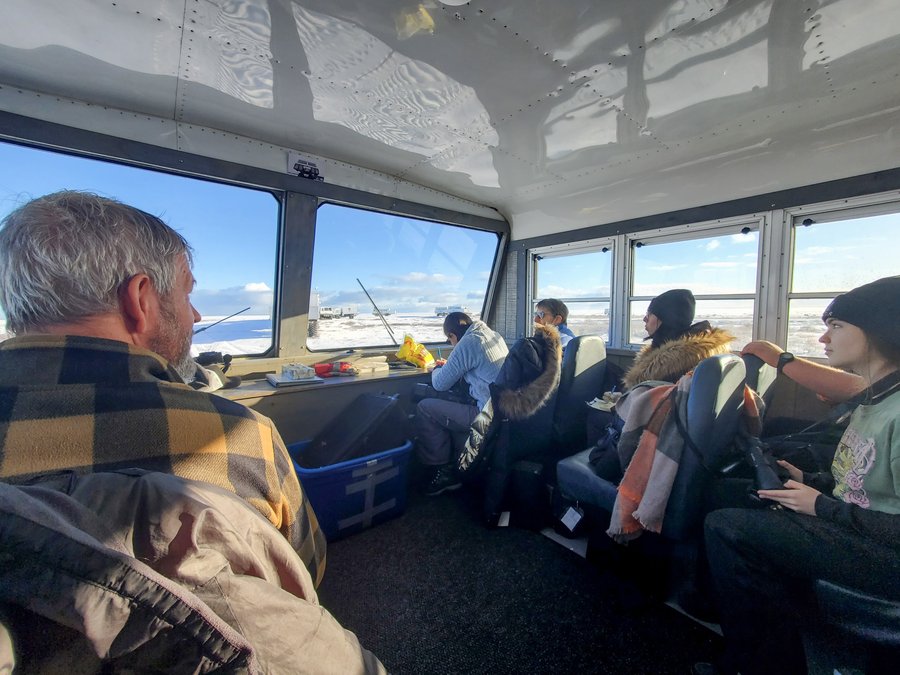
(PHOTO: NORTHSTAR PROGRAM)
While the weather predictions held true, the Churchill Northern Studies Centre (CNSC) turned out to be incredible! Spacious halls, outdoor viewing decks perfect for watching the Aurora Borealis, and cozy rooms.
“So many unexpected surprises made our stay unforgettable. But the real excitement lay ahead: meeting the locals and diving into fieldwork.”
She added that before fieldwork began, the team explored the town of Churchill to acclimate.
“We reached the shore—vast and windswept, with a sign that read Danger: Polar Bears. A broken boat abandoned in the sand contributed to the spine-chilling atmosphere. Standing there, I could feel the vastness of the North.”
Madinova says the team was then split into groups, each with a local member of the NorthSTAR team as a guide – one of the Churchill Junior Canadian Rangers. They explored the city’s most striking structure—the Town Centre Complex, an all-in-one school, health center, and government office. The team also stopped by the Northern store and touristy souvenir shops and listened to community members’ stories.
“By nightfall, we were exhausted—but science awaited! Tradition dictated that on our first evening, we create a naming system for referring to each bear we observed — alphabetized, themed, and always delightfully nerdy (last year’s followed obscure scientific terms, giving us bears named ‘Bleb’ and ‘Ilieum’),” she added.
The next morning, the air buzzed with excitement. “Not every day do you study polar bears in the wild! Armed with notepads and cameras, we boarded the massive tundra buggy—its five-foot tires towering over us. Nothing prepares you for the real thing – seeing a wild polar bear for the first time,” she added.
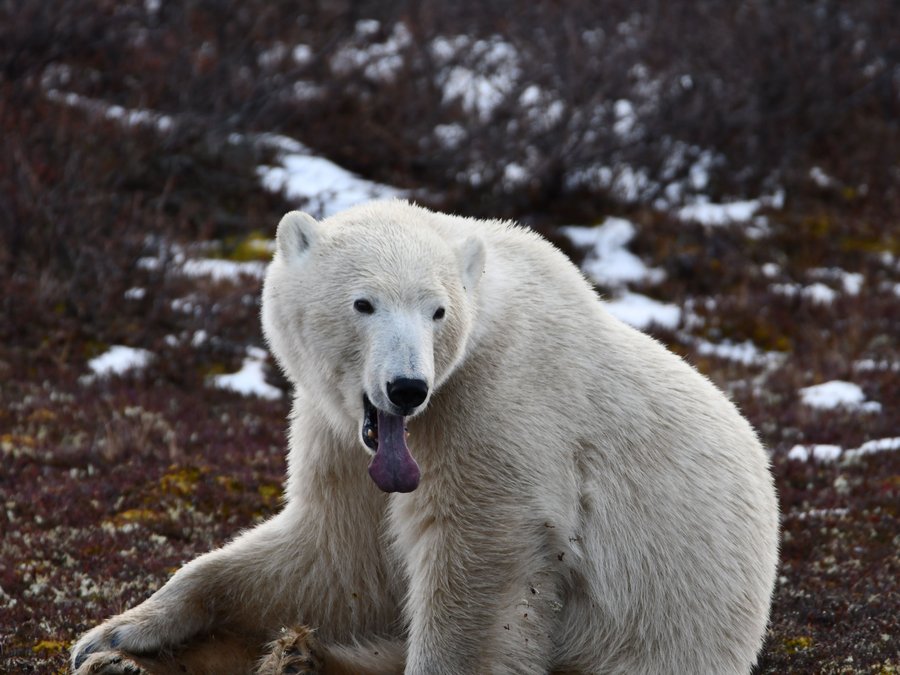
(PHOTO: NORTHSTAR PROGRAM)
According to Madinova, the bears moved naturally, undisturbed by the team’s presence.
“We worked carefully, categorizing bears, taking location notes, and capturing essential research photos: muzzle close-ups (checking for identifiable scar patterns), side profiles (for body condition and whisker prints), and, of course, the all-important butt shots (for sex identification).” When the group returned to CNSC, they prepared for the next day by “looking over our photos and notes, before crashing, exhausted and exhilarated,” she added.
Brett Naylor is an undergraduate in biological sciences at the University of Manitoba and is Anishinaabe through Bloodvein First Nation. A lifelong connection to nature motivates him to combine Indigenous ways of knowing with Western science to help preserve ecosystems for future generations. He describes his last day on the NorthSTAR program field trip.
“Our last day in the field began with the unavoidable morning rush: bleary-eyed students in their pajamas hastily eating breakfast while others gathered our gear—cameras, range-finders, and food, so as to be ready for the 7 am bus to the tundra buggy loading dock. When we arrived at the dock, our tundra buggy driver Marcus greeted us cheerily and helped us load food and gear onboard.”
"Looking around the crowded buggy at the high school students, I saw some faces that were sad to be leaving."
Once everyone was settled, the team embarked on a “bouncy journey across the arctic tundra, with our eyes peeled for polar bears.”
As they approached Gordon’s Point on the western coast of Hudson’s Bay, the sun peeked out, and the temperature began rapidly rising.
“The snow-blanketed ground of yesterday swiftly melted, and the sudden golden light revealed patches of vibrant green lichen, electric yellow moss, and ruby-red seaweed. The landscape was transformed from an Arctic landscape to what now looked like the surface of an alien planet,” he said.
“50 meters to the left!” Dr. Jane Waterman called out. And sure enough, “we saw our first bear of the day, her bright white fur contrasting brilliantly with the surroundings, given the lack of snow,” he said. “Everyone crowded to the port side of our ‘ship.’ Windows were lowered, and Canons out: the first salvo—of what would be many shuttered shots—were taken!”
According to Naylor, after thousands of pictures of at least 14 bears, Marcus, the buggy driver, announced that they had better head back to the CNSC before the sun went down.
“Looking around the crowded buggy at the high school students, I saw some faces that were sad to be leaving, but the majority had happy smiles stretching across satisfied faces. It was a magical experience I know we will never forget.”
Currently led by Dr. Emily A. McKinnon, a Science Education Specialist with the University of Manitoba Access Program and an Adjunct Assistant Professor at the University of Windsor, the NorthSTAR team aims to create opportunities for more northern and Indigenous students to participate in this and other science programs.
